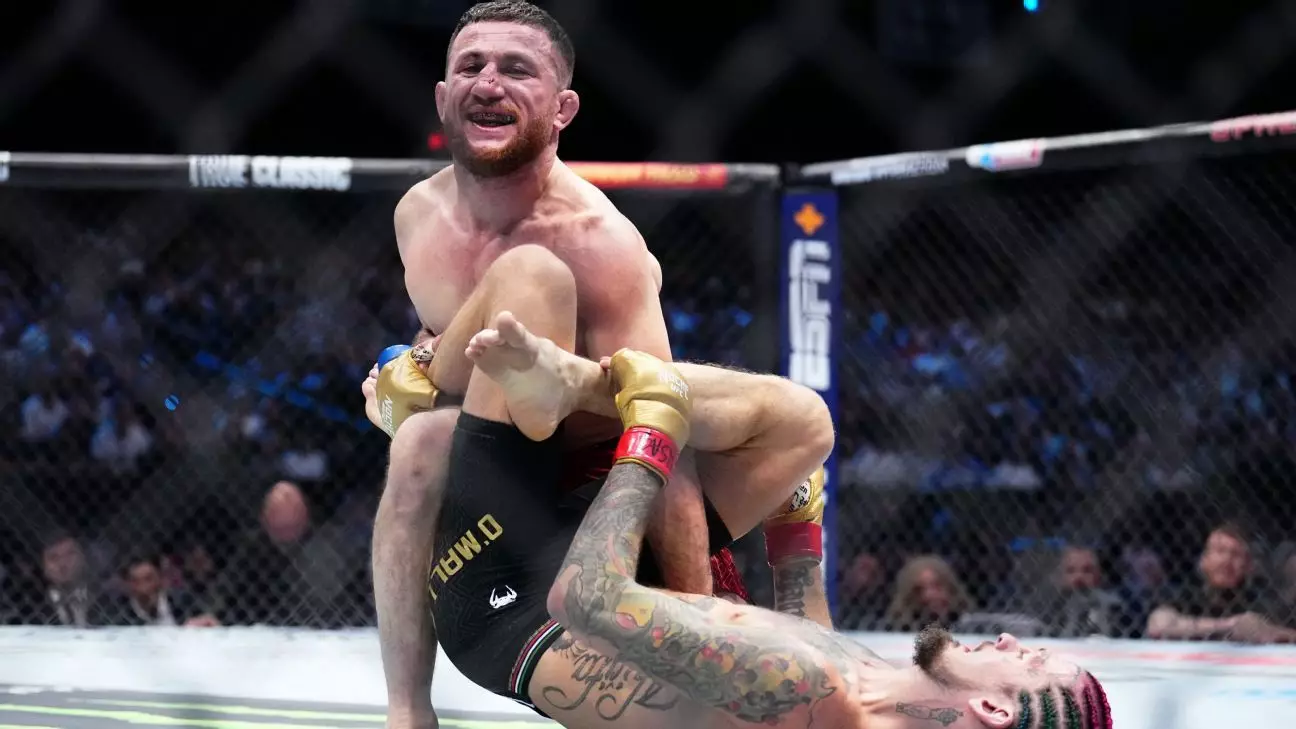The recent UFC 306 event in Las Vegas marked an important milestone for the organization, combining thrilling combats with innovative venue experiences at the Sphere. Headlined by two colossal title fights, the night not only showcased the talents of fighters like Merab Dvalishvili and Valentina Shevchenko, who reclaimed their titles, but also raised questions about the nature of competition in the octagon and the evolving expectations from both fighters and fans alike.
Merab Dvalishvili’s performance against Sean O’Malley in the bantamweight title fight is a testament to the effectiveness of a well-executed game plan. While Dvalishvili’s six takedowns may seem below his usual standard, it’s important to recognize the strategic depth behind his approach. He didn’t just rely on his grappling strength; he meticulously controlled the pace of the fight, effectively stifling O’Malley’s renowned striking capabilities. This encounter transformed into an excellent exhibit of how a grappler can dictate rhythm, forcing the striker into a defensive position.
Throughout the bout, O’Malley appeared increasingly preoccupied with Dvalishvili’s constant pressure, leading to a significant imbalance in activity levels. The fact that Dvalishvili landed a staggering 310 strikes compared to O’Malley’s 91 underscores the dominance he demonstrated. Even when his takedown attempts met resistance, he adapted, forcing O’Malley to react defensively. This transformation from a one-dimensional fighter into a more adaptable mixed martial artist showcases the measure of Dvalishvili’s growth and tactical intelligence. The broad question now is: Can he maintain this level of performance against fighters who possess both striking power and grappling skills?
Similarly, Valentina Shevchenko’s triumph over Alexa Grasso highlighted a different side of championship strategy, showcasing her grappling prowess in a calculated manner. Shevchenko’s fight was not filled with highlight-reel finishes; rather, it was a clinical display of control. Successfully grounding Grasso throughout five rounds, Shevchenko maintained authority with eight takedowns and over 16 minutes of control time, demonstrating that a methodical approach can yield significant results.
Yet, the conversations surrounding this fight bring up essential points: Is this a sign of Shevchenko’s adaptability or a commentary on Grasso’s struggles to adjust? While Shevchenko’s strategy may not have been thrilling to watch, it effectively neutralized her opponent, thus forcing fans to reconsider the narrative of edge-of-the-seat excitement versus strategic dominance in combat sports. Looking toward the horizon, the question of whether there will be an immediate rematch suggests a competitive landscape in women’s MMA, with several rising stars eager to claim the title.
Further elevating the night was the venue itself. The Sphere in Las Vegas introduced a sensory experience that redefined audience engagement. Designed to enhance the spectator experience, it seems to have accomplished an unprecedented fusion of visual art and live sports. The innovative set-up, characterized by awe-inspiring projections, created an environment where visuals complemented the action rather than distracted from it. UFC CEO Dana White’s vision for a stadium experience appeared to have materialized, breaking the typical cookie-cutter mold of event spaces.
Yet, critical voices emerged about the balance between spectacle and substance. While the Sphere provided a stunning backdrop, some felt the fight experience was potentially overshadowed by the visual extravagance. Viewers at home were captivated by the show, but the essence of the fighting, the core of the UFC, sometimes felt like it was relegated to a supporting role against the innovative visuals. This led to a juxtaposition between the in-person experience and the television broadcast—while live attendees basked in a data-drenched spectacle, those watching from home were left wanting for a more direct connection to the fights.
With the excitement surrounding UFC 306 settling, it opens a chapter filled with questions about the future. Both champions, Dvalishvili and Shevchenko, are now facing a landscape filled with challengers who are eager to dethrone them. As they prepare for their next title defenses, the dimensions of strategy employed in their bouts portray a metamorphosis within the sport itself. The nuanced dynamics between grappling and striking, and the evolving fan expectations towards fight experience, are increasingly relevant in this new era.
Ultimately, UFC 306 showcased a period of transition—fans witnessed remarkable athletic excellence and strategy hybridized with a revolutionary stage experience. This unique mélange proposes exciting possibilities for both fighters and audiences moving forward. The UFC is in the business of fighting, but with enthralling venues like Sphere at their disposal, the question remains: How do they maintain the integrity of the combat while embracing innovative spectacles? As this trend unfolds, it stands to reshape not only the UFC but the sporting world at large.


Leave a Reply